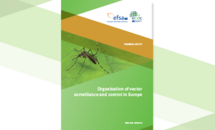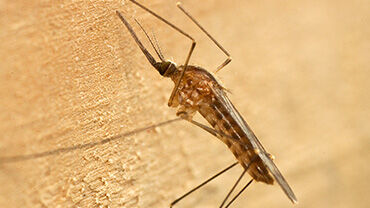Organisation of vector surveillance and control in Europe
This report aims to provide an overview of how vector surveillance and control is organised in EU/EEA countries, EU enlargement policy countries, European Neighbourhood Policy partner countries and the UK, of which legal frameworks for vector surveillance and control are in place, of who is responsible for making decisions about and who is responsible for implementing the vector surveillance and control.
Executive summary
In recent decades, Europe has faced changes in the epidemiological situation of vector-borne diseases. Vector surveillance and control are key in the prevention of vector-borne disease transmission, and their organisation can be complex due to the many stakeholders involved. This report provides an overview of how vector surveillance and control is organised in European Union/European Economic Area (EU/EEA) countries, EU enlargement policy countries, European Neighbourhood Policy partner countries and the UK, and highlights challenges and opportunities.
In 2020, a questionnaire was sent to the VectorNet Entomological Network (VEN) members of 28 EU/EEA countries, seven EU enlargement policy countries, 14 European Neighbourhood Policy partner countries and the United Kingdom (UK). In total, 43 out of 50 targeted countries completed and returned questionnaires, resulting in an 86% response rate. Vector surveillance and control was most often implemented in the context of mosquitoes and mosquito-borne diseases. The presence of a mosquito-vector, in the absence of autochthonous transmission, was a trigger to implement control measures in 87% of the countries. Tick surveillance was implemented in 33 of the 43 responding countries, whereas tick control was limited to 12 countries and implemented most often in nonEU/EEA countries. Absence of tick control in countries is probably related to the lack of reliable vector control methods and strategies, as indicated by 18 countries. Sand fly surveillance and control measures were implemented by 17 and seven countries, respectively. Biting midge surveillance was more often implemented in EU/EEA countries (62%) compared to EU enlargement policy countries, European Neighbourhood Policy partner countries and the UK (47%).
The most prominent limiting factor for implementing vector surveillance and control mentioned by the respondents was the lack of funding and trained professionals. Responses to this questionnaire also pointed to the fact that many different stakeholders are involved in vector surveillance and control, making coordination and collaboration a necessary element for success. Most of the active vector surveillance was classified as ‘limited in time’ and this holds for all vector groups. We believe that the development of long-term sustainable vector surveillance would require, but also offer, the opportunity to build a durable entomological capacity of e.g. trained professionals. It was often mentioned that the various roles and responsibilities in vector control are not clearly defined. This complicates the development of control procedures, guidelines and frameworks.
The changing epidemiological situation in EU/EEA countries, EU enlargement policy countries, European Neighbourhood Policy partner countries and the UK poses a challenge to vector surveillance control practices. Countries that are not familiar with vector surveillance and control have to build up their expertise and experience. Further, the currently available control methods might be insufficient to cope with the changing epidemiological situation and innovative control tools and methods might be needed in the future. Key points to consider for the future relate to:
- sharing experience and expertise among countries;
- improving coordination and collaboration, among the many involved stakeholders;
- developing a long-term perspective for sustainable vector surveillance and control at national and international level;
- developing guidance on vector control;
- advocating for funds for research on innovative vector control methods and tools to be able to cope with the future challenges of vector-borne diseases;
As limited financial and human resources were frequently specified as bottlenecks for surveillance and control activities, the public health benefits of these activities should be clearly demonstrated to (political) decision makers, as well as the differences in environmental and financial costs of the different control methods.
Download







